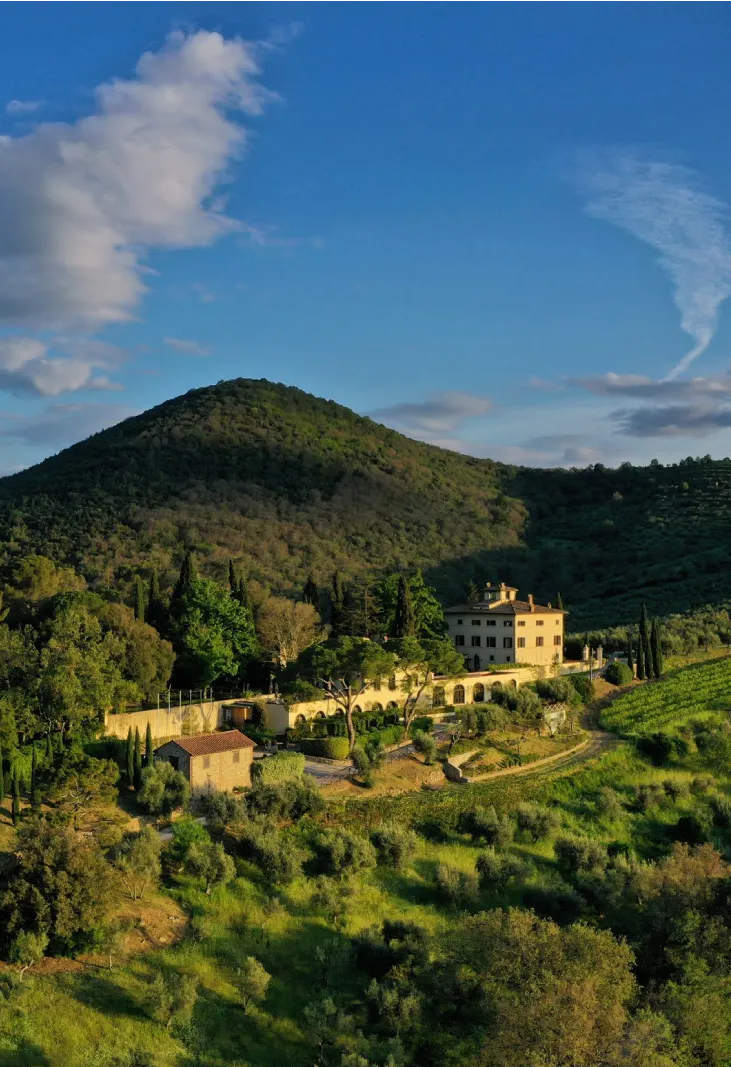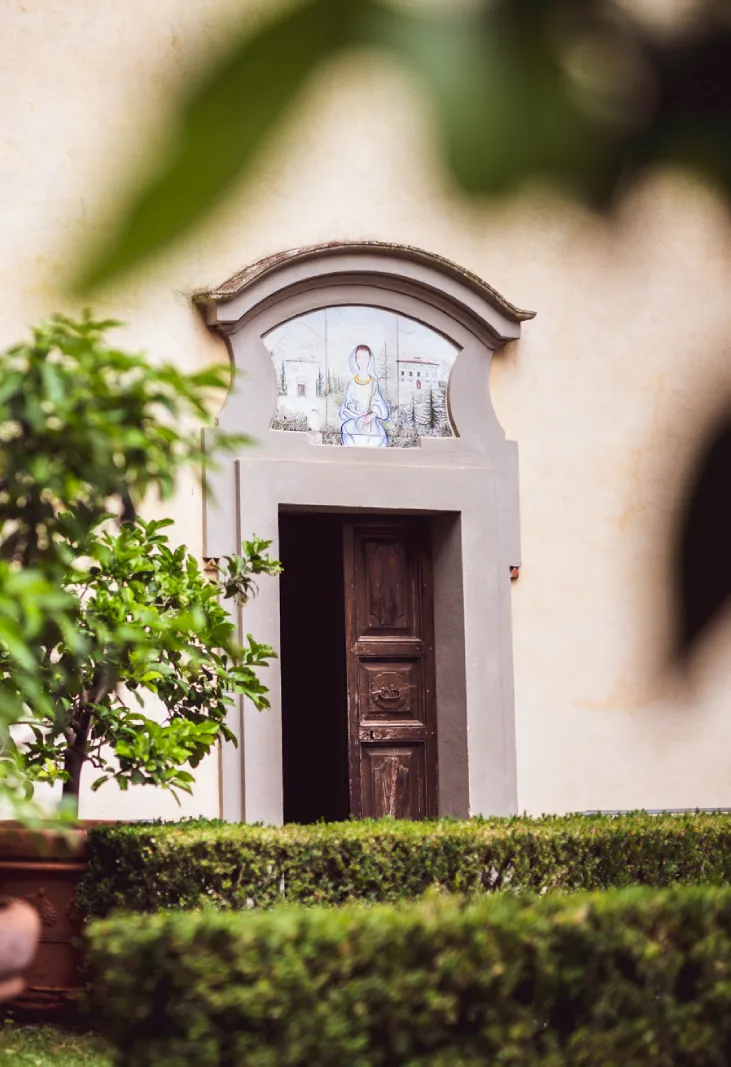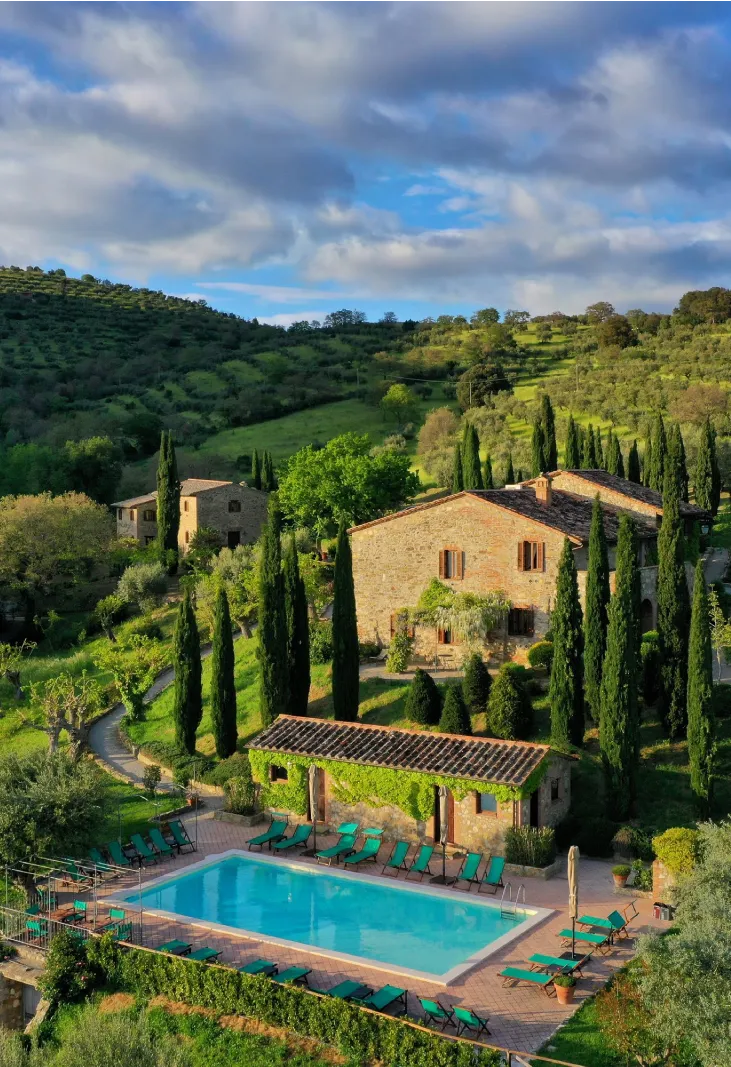History of
Relais Villa Monte Solare

Monte Solare, the highest of the hills that crown the southern shores of Lake Trasimeno, owes its fame to a centuries-old tradition: its name derives from the consecration of the mountain to the Sun God, Sol Invictus.
In the mid-1990s, in part thanks to a campaign directed by archaeologist Maria Cristina De Angelis, an important anthropic presence on the mountain was definitively proven, dating back to at least the twelfth century BC.
In particular, remains of walls and structures, in ancient times part of an area used for cultural and religious purposes, are visible on the summit of the mountain.
In Etruscan times, around the eighth century BC, an obelisk made of pietra serena with an imposing metal pinnacle was placed on the summit of the mountain. The obelisk functioned as a solar calendar and bore inscriptions and reliefs on each of the four sides corresponding to the four cardinal points.
The obelisk was found in 1642 after having been hidden for more than 20 centuries in a monastery in a nearby town: the stone part is still visible here, while the remains of the metal pinnacle are in the Museo della Civiltà Etrusca in Rome.
In the surrounding area, the presence of sacred sites such as the sanctuary of Santa Maria di Mongiovino confirms the religious importance of the location, and the numerous findings at the site of this Renaissance sanctuary, dating back to pagan and early Christian times, confirm the undisputed importance of the positive spiritual energies of the place and its surroundings.
The Villa di Monte Solare, located halfway up the hill at an altitude of 406 metres above sea level, has an original core dating back to the end of the fifteenth century.
The aristocratic chapel standing in the Villa’s gardens and dedicated to Saint Lucy, was built at the end of the sixteenth century and is described in some chronicles of the city of Perugia in the first decade of the seventeenth century. Most of the farmsteads on the property also date back to the first half of the seventeenth century, as evidenced by some maps conserved in the Archivio Vescovile in Perugia.
The Villa in the last three centuries was not only the residence of noble families, but also the administrative and operational centre of a large-scale farming activity.
From the earliest information concerning the ownership of Don Lorenzo Cagnoni in 1730, it appears that the Villa di Monte Solare passed from the possessions of the Counts Mancini di Panicale to those of the Counts Antonini di Sellano in 1857. Subsequently, due to financial difficulties of the latter family, the estate was sold to the Giommaroni Cherubini family, originally from the Marsciano district, who owned it for about a century until almost the end of the twentieth century, when the family died out.
The Villa features typical eighteenth-century architecture, as does the neighbouring Limonaia (lemon house) and the layout of the gardens also reflects this period, in the form of a formal garden, a secret garden and the hunting gardens. In this last area of the garden, in addition to important plant species, there is a hide of particular historical value.


The centuries-old presence of the Giommaroni Cherubini family played a particularly important role in the reorganisation of cultivation on the large farm with major drainage works, the introduction of extensive vine cultivation and the planting of large quantities of mulberry trees, used for the breeding of silkworms.
Finally, it is worth remembering that these innovations in agriculture took place while leaving untouched the very large extension of centuries-old olive trees, today subject to special protection and included in the census of Umbria’s historical olive groves.
In 2013, the estate was purchased by the Chang family, who, while on holiday in Italy, fell in love with the obvious charm of this unspoilt portion of the Umbrian countryside.
Today, the Relais Villa Monte Solare, is a 4-star hotel with a SPA, welcoming around 9,000 guests a year and boasting an excellent organic production of Colli del Trasimeno DOP-certified extra virgin olive oil.